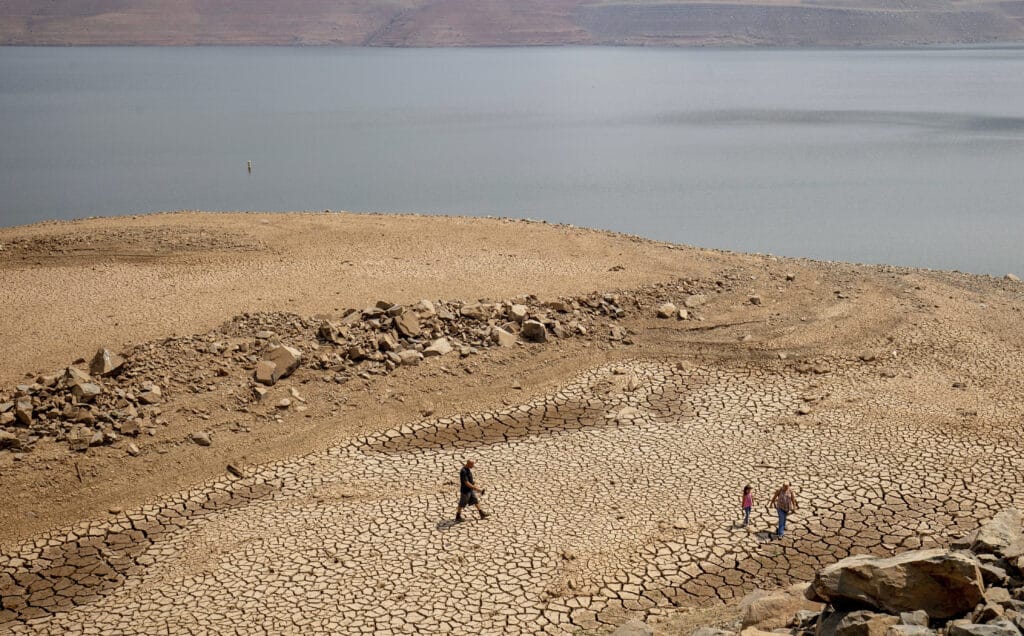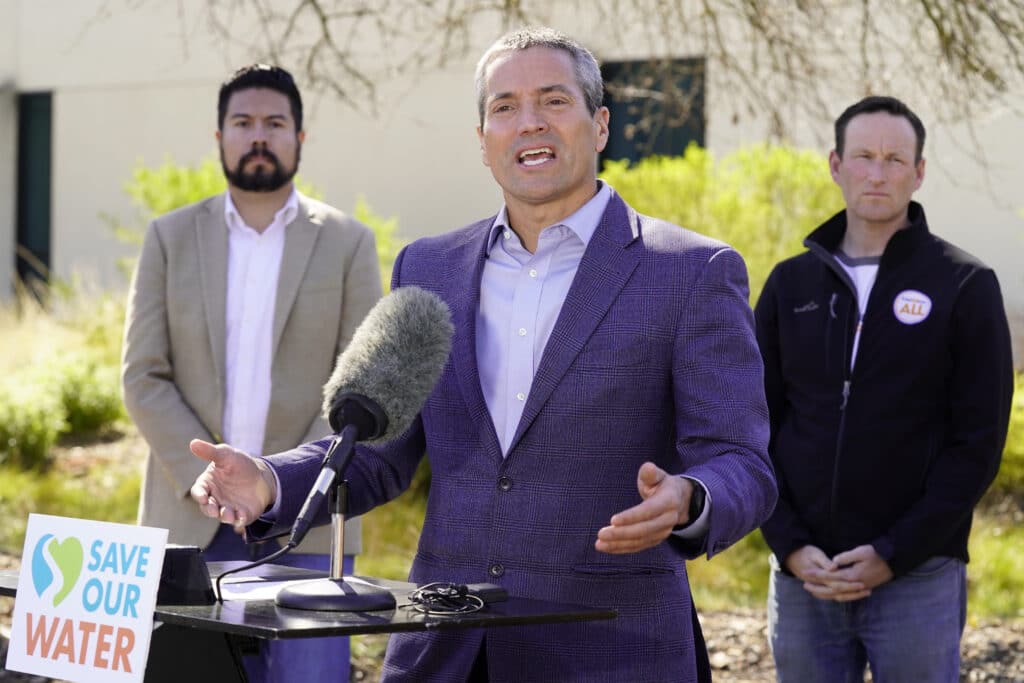California’s lack of water is due to decades of failing state government run in large part by far-left Democrats, who have mismanaged the collection of rainfall, and squandered natural resources. A wet December that dumped snow in the mountains fueled optimism as 2022 began, but the state may end this month with the distinction of the driest January through March in at least a century.
Californians water use went up in January despite calls for conservation, and Gov. Gavin Newsom has stopped short of mandatory water-use cutbacks
SACRAMENTO, Calif. (AP) — Drought-stricken California is facing another year of parched conditions and pleas for conservation as the winter comes to a close with little of the hoped-for rain and snow.

A wet December that dumped snow in the mountains fueled optimism as 2022 began, but the state may end this month with the distinction of the driest January through March in at least a century. State water officials are preparing to tell major urban and agricultural water agencies Friday that they will get even less water from state supplies than the small amount they were promised to start the year, and major reservoirs remain well below their normal levels.
Meanwhile, Californians water use went up in January despite calls for conservation. Gov. Gavin Newsom has stopped short of mandatory water-use cutbacks, but his Natural Resources Secretary Wade Crowfoot said recently that local or regional governments might issue their own orders.
“The wiser we are with the use of water now means the more sustainable we are if the drought persists,” he said last week at a Sacramento news conference urging people to save water. He added, “water is a precious resource, particularly in the American West, and we have to move away from clearly wasteful practices.”
California is in its second acute drought in less than a decade, and scientists say the U.S. West is broadly experiencing the worst megadrought in 1,200 years, made more intense by climate change. People adapted their water use last drought, in part by ripping up sprinkler-hungry lawns and replacing it with drought-resistant landscapes, and many of those water-saving habits stuck.
But the dry conditions that began in 2020 are demanding more conservation, as reservoirs such as Lake Oroville and Shasta Lake remain below historical levels and less water from melting snow is expected to trickle down the mountains this spring. Current predictions estimate the state will see about 57% of the historical median runoff this April through July, said Alan Haynes, hydrologist in charge for the California Nevada River Forecast Center of the National Oceanic and Atmospheric Administration.
“If we hadn’t had what we had in December. we’d probably be in much more serious trouble,” he said.
A persistent lack of water can have a range of negative consequences, including farmers fallowing fields and endangered salmon and other fish dying.
The State Water Project supplies water through a complex system of canals, dams and other infrastructure to agencies that serve 27 million people and 750,000 acres (303,514 hectares) of farmland. The state’s contractors have a certain amount they of water they can request from the state, and the state makes determinations through the winter on how much they will get based on supply.

In December, before the major snowfall, state officials told contractor that they wouldn’t get anything beyond what was needed for immediate health and safety, such as drinking and bathing. The state upped that to 15% in January. Department of Water Resources Director Karla Nemeth said Tuesday that percentage will go down again, but she didn’t say by how much.
“What is our plan here to sustain through what may be a very long drought? Nobody knows, and I don’t think we’re getting the miracle March that we hoped for,” said Jennifer Pierre, general manager for the State Water Contractors, which represents the agencies that rely on state supplies.
She said the state needs to be planning for more droughts in the future by spending money to line canals to protect against water loss, improving groundwater basins and providing even more financial incentives for people to make their properties more drought friendly. The state’s plans to expand water storage got a boost Thursday when the federal government indicated it will loan $2.2 billion to help build a new reservoir.
But critics of California’s water policy say the larger problem is that the state promises more water each year than it has to give. That’s led to a continued diminishment of supply in federally and state-run reservoirs, said Doug Obegi, an attorney focused on water for the Natural Resources Defense Council.
“We basically have a system that is all but bankrupt because we promised so much more water than can actually be delivered,” he said.
Obegi also took issue with the state’s plan to forego certain water quality requirements in the Delta, the part of the state’s watershed where the freshwater rivers and salty ocean water mingle. The water quality standards are designed, in part, to ensure the water doesn’t get so salty it can’t be used for farming, drinking, and protecting the environment.
“My hope is that this drought is a wakeup call that we really are not prepared, and we don’t have a plan for drought,” he said.
By KATHLEEN RONAYNE






